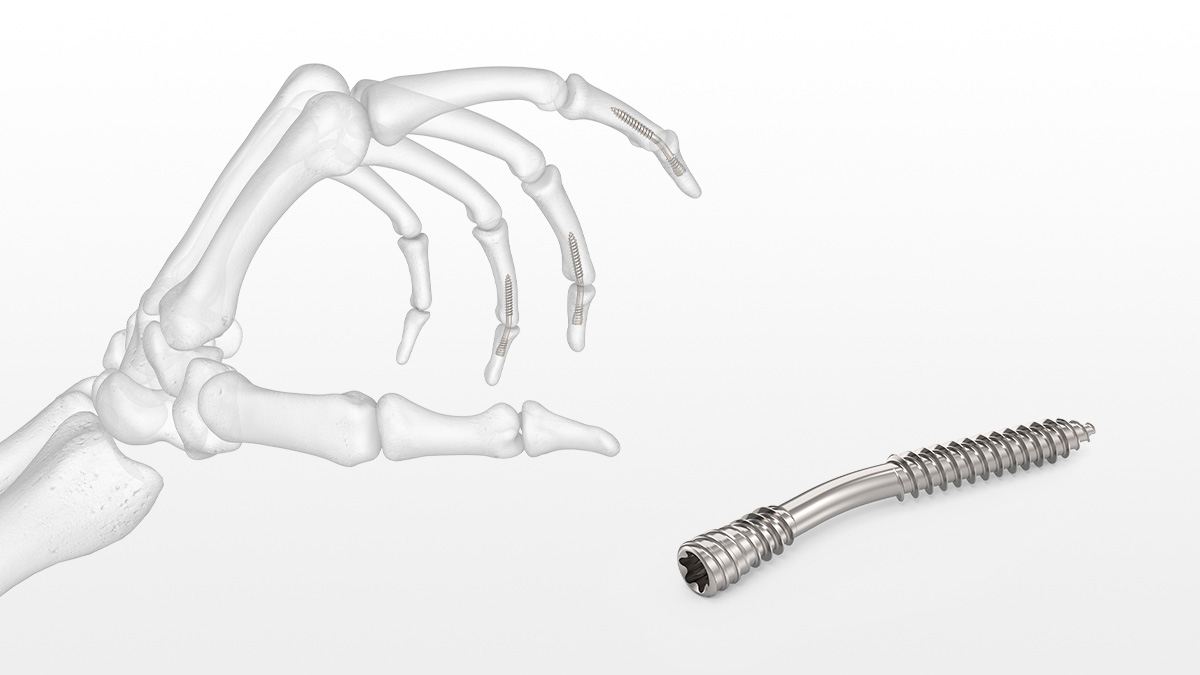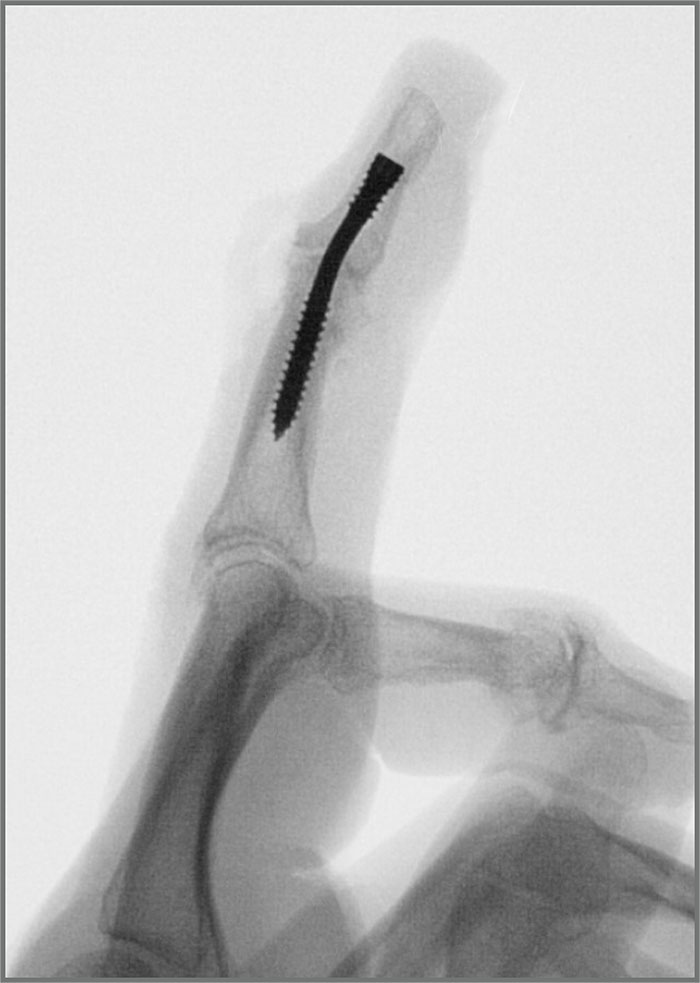ArcPhix™ Functional Flexion Compression Screw System

Overview
Indications For Use
Related Documents
ArcPhix Functional Flexion Compression Screw Procedures
The ArcPhix Functional Flexion Compression Screw can be used in the following procedures:
DIP/PIP Fusion (Phalanges / Thumb)DIP Joint Fusion with Functional Flexion
While most current treatment methods for late-stage arthritis in phalangeal joints may provide suitable outcomes, there is likelihood of straight, DIP joint fusions, which are not optimal.
Research has shown that when a patient's DIP joint is fused in a functional position, finger dexterity and grip strength improve compared to that of a patient with a straight, full extension fusion.1
Physicians can achieve angled fusions by using K-wire fixation, however, the surgical technique may inadvertently produce a straight fusion and the immobilization protocol can lead to several complications and suboptimal results. Similarly, compression screws do not offer the additional benefit of functional flexion.
Functional flexion is fusion of the DIP joint in a curved position that allows the distal end of the phalanges to maintain functionality. This enables patients to better perform activities that require grip strength and dexterity, such as holding a cup, playing an instrument, or gripping a golf club.

A New Standard for DIP Joint Fusions
The ArcPhix Intramedullary Angled Compression Screw sets a new standard by offering a design that is specifically sized to optimally fit the anatomy of the distal and middle phalanges. The pre-bent design simplifies the process of constructing a clinically appropriate angle for DIP joint fusions with functional flexion.1 The early mobilization achieved prevents stiffness that often occurs with other techniques and offers patients the ability to minimize recovery time.
The system is provided sterile, where the implants are single-use with a disposable instrument kit containing all necessary instrumentation to perform the case.

Features
- Angled screw allows for fusion of the DIP joint in a functional position.
- Specifically sized to optimally fit the anatomy of the distal and middle phalanges.
- Differential thread pitch facilitates compression across the DIP joint to create stability during bone fusion.
- Percutaneous insertion method minimizes soft tissue damage and device prominence on fingertip.
Key Benefits
Functional flexion
Improved grip strength and dexterity compared to straight, full extension fusion1
Immediate to early, active mobilization
Early mobilization prevents stiffness that often occurs with other techniques and offers patients the ability to minimize recovery time
Minimally invasive
Minimally invasive with no secondary procedure or immobilization required
Surgical efficiency
Pre-bent design simplifies the process of constructing a clinically appropriate angle for functional fusion of the DIP joint